Ditapis dengan

Modelling project management performance
- Edisi
- Vol. 20 Iss 2
- ISBN/ISSN
- 0265-671X
- Deskripsi Fisik
- 28 p .
- Judul Seri
- International Journal of Quality & Reliability Management
- No. Panggil
- ATC MG BRY m
- Edisi
- Vol. 20 Iss 2
- ISBN/ISSN
- 0265-671X
- Deskripsi Fisik
- 28 p .
- Judul Seri
- International Journal of Quality & Reliability Management
- No. Panggil
- ATC MG BRY m

A study on educations role in establishing strategies for improving safety at…
Safety at sea is a major concern of the maritime industry and it is through education and training that continued improvement can be realized. Despite increased awareness there has often only been minimal improvement made to training programs. The steady stream of accidents and disasters at sea are testament to this situation. This paper has been written to encourage a review of present maritim…
- Edisi
- Volume 27 Number 3
- ISBN/ISSN
- -
- Deskripsi Fisik
- 18 pages
- Judul Seri
- The Asian Journal of Shipping and Logistics
- No. Panggil
- ATC MR DAV s

Virtual logistics- transport in the marketspace
While transport seems to be increasingly constrained in its mission to supply services which are continuous, costless and available in all directions, the telecommunications system seems to have no such constraints and to be developing ever more rapidly in terms of inter‐connectivity, falling costs and multi‐directionality. It would seem to be impossible to contemplate the future demand for…
- Edisi
- Vol. 28 No. 7, 1998, pp. 547-574,
- ISBN/ISSN
- 0960-0035
- Deskripsi Fisik
- 30 p.
- Judul Seri
- International Journal of Physical Distribution & Logistics Management
- No. Panggil
- ATC LO CRO v C.1

A meta-analysis of DEA and SFA studies of the technical efficiency of seaport
This paper presents a meta-analysis of variations in seaports’ Mean Technical Efficiency (MTE) scores based on 40 studies published in refereed academic journals. We link the variation in estimated MTE scores to differences in the following factors: the frontier methodology used, which essentially are the Data Envelopment Analysis (DEA) and the Stochastic Frontier Analysis (SFA); regions wher…
- Edisi
- -
- ISBN/ISSN
- -
- Deskripsi Fisik
- 12 p .
- Judul Seri
- Transportation Research Part A
- No. Panggil
- ATC MG BRA a

Rimbaud in java : the lost voyage
In A Season in Hell, at the age of eighteen, the French poet Arthur Rimbaud predicted the rest of his life: 'My day is done; I'm leaving Europe. The sea air will burn my lungs; lost climes will tan my skin.' Three years later, in 1876, he joined the Royal Army of the Dutch Indies as an infantryman and sailed for Java, where he promptly deserted and fled into the jungle. It was the most enigmati…
- Edisi
- -
- ISBN/ISSN
- 978-981-4260-82-4
- Deskripsi Fisik
- 128 p, 19 cm
- Judul Seri
- -
- No. Panggil
- LC 959.8 JAM r
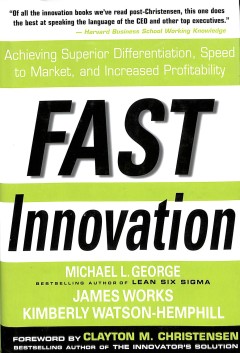
Fast innovation : achieving superior differentiation, speed to market, and in…
“How can I create an innovation engine that will consistently deliver substantial organic growth?” This question is the number-one issue for most CEOs and senior executives today. Innovation is a critical driver of organic growth, yet based on the authors' research, only a small percent of companies effectively use innovation to sustain long-term, profitable growth. And the stakes couldn't…
- Edisi
- -
- ISBN/ISSN
- 978-0-07-145789-7
- Deskripsi Fisik
- xvi, 335 p., 25 cm
- Judul Seri
- -
- No. Panggil
- LC 658.81 GEO f
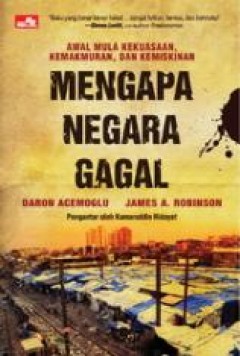
Mengapa Negara Gagal : Awal Mula Kekuasaan, Kemakmuran, dan Kemiskinan
Dalam era globalisasi seperti sekarang ini, mengapa masih ada negara yang kaya dan negara yang miskin? Mengapa kesenjangan pendapatan dan sosial antara negara kaya dan negara miskin bisa sangat jauh berbeda, sampai-sampai eksistensi negara miskin dibayangi oleh cap “Negara Gagal”? Sebagai contoh, lihat saja negara Korea. Walau mereka sama (baik dari segi budaya, suku, ras, dan etnik), situ…
- Edisi
- -
- ISBN/ISSN
- 978-602-02-3487-8
- Deskripsi Fisik
- xxiii, 582 p., ; illus : 24 cm
- Judul Seri
- -
- No. Panggil
- TXT MG ACE m C.1
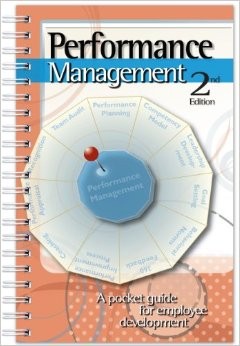
Performance Management : A Pocket Guide for Employee Development
- Edisi
- 2nd Ed.
- ISBN/ISSN
- 978-1-57681-115-3
- Deskripsi Fisik
- x, 176 p., ; illus : 10 cm
- Judul Seri
- -
- No. Panggil
- TXT MG ROL p
- Edisi
- 2nd Ed.
- ISBN/ISSN
- 978-1-57681-115-3
- Deskripsi Fisik
- x, 176 p., ; illus : 10 cm
- Judul Seri
- -
- No. Panggil
- TXT MG ROL p
Performance consulting : A Strategic Process to Improve, Measure, and Sustain…
In America, organizations spend $175 billion in training initiatives and more than $500 billion in human resource solutions every year yet often have little to show for it. One reason is that people “jump to solutions” before they identify the causes of the problem. Performance consultants are effective because they partner with clients to clarify business goals and determine root causes fo…
- Edisi
- 3rd. Ed.
- ISBN/ISSN
- 978-162-656-229-5
- Deskripsi Fisik
- xxiv, 284 p., ; illus : 24 cm ; bibliography ; ind
- Judul Seri
- -
- No. Panggil
- TXT MG ROB p C.1

On cost-efficiency of the global container shipping network
This paper presents a simple formulation in the form of a pipe network for modelling the global container-shipping network. The cost-efficiency and movement-patterns of the current container-shipping network have been investigated using heuristic methods. The model is able to reproduce the overall incomes, costs, and container movement patterns for the industry as well as for the individual shi…
- Edisi
- VOL. 32, NO. 1, 15–30
- ISBN/ISSN
- 1464–5254
- Deskripsi Fisik
- 18 p.
- Judul Seri
- Maritime Policy & Management: The flagship journal of international shipping and port research
- No. Panggil
- ATC LO SON o

Process Metaphor And Knowledge Management
This paper attempts to develop a metaphor to explain knowledge and perhaps the basic construct of knowledge management, in a way that might add to the practical understanding of organisational knowledge.
- Edisi
- Vol. 34 No. 6 2005
- ISBN/ISSN
- 0368-492X
- Deskripsi Fisik
- 14 p
- Judul Seri
- -
- No. Panggil
- ATC MG ROW p

The Transformation of Public Space in South Street Seaport
This article documents the development process involved in transforming South Street Seaport, on the east side of Lower Manhattan, from an open-air museum and public space to a privately controlled and commercialized space. It criticizes the “Disneyfication” literature that has attempted to describe this type of transformation for its focus solely on the designs of spaces-and not on their s…
- Edisi
- Volume 19, Number 4, pages 405-417
- ISBN/ISSN
- 0735-2166
- Deskripsi Fisik
- 13 p.
- Judul Seri
- JOURNAL OF URBAN AFFAIRS
- No. Panggil
- ATC MG DEF t

Marketing and business process re-engineering
- Edisi
- Vol. 1 No. 1, 1995
- ISBN/ISSN
- 1355-2538
- Deskripsi Fisik
- 9 p.
- Judul Seri
- Journal of Marketing Practice: Applied Marketing Science
- No. Panggil
- ATC MG LYN m
- Edisi
- Vol. 1 No. 1, 1995
- ISBN/ISSN
- 1355-2538
- Deskripsi Fisik
- 9 p.
- Judul Seri
- Journal of Marketing Practice: Applied Marketing Science
- No. Panggil
- ATC MG LYN m

Fire safety at sea
- Edisi
- -
- ISBN/ISSN
- 1-902536-42-8
- Deskripsi Fisik
- -
- Judul Seri
- -
- No. Panggil
- TXT MR Cow f
- Edisi
- -
- ISBN/ISSN
- 1-902536-42-8
- Deskripsi Fisik
- -
- Judul Seri
- -
- No. Panggil
- TXT MR Cow f

Port towns and urban cultures: international histories of the waterfront, c.1…
- Edisi
- -
- ISBN/ISSN
- 978-1-137-48316-4
- Deskripsi Fisik
- -
- Judul Seri
- -
- No. Panggil
- TXT PO Bea p
- Edisi
- -
- ISBN/ISSN
- 978-1-137-48316-4
- Deskripsi Fisik
- -
- Judul Seri
- -
- No. Panggil
- TXT PO Bea p

A Framework for Applying Logistical Segmentation
- Edisi
- Vol. 24 Iss 10 pp
- ISBN/ISSN
- -
- Deskripsi Fisik
- 9 p
- Judul Seri
- International Journal of Physical Distribution & Logistics Management
- No. Panggil
- ATC LO MUR a
- Edisi
- Vol. 24 Iss 10 pp
- ISBN/ISSN
- -
- Deskripsi Fisik
- 9 p
- Judul Seri
- International Journal of Physical Distribution & Logistics Management
- No. Panggil
- ATC LO MUR a

Supply governance structures for reverse logistics systems
The purpose of this paper is to examine the changes in governance structures that evolved as reverse logistics systems were developed. The UK car crash repair sector was used as a case study.
- Edisi
- Vol. 33 No. 6, 2013
- ISBN/ISSN
- -
- Deskripsi Fisik
- 22 p.
- Judul Seri
- International Journal of Operations & Production Management
- No. Panggil
- ATC LO HAR s
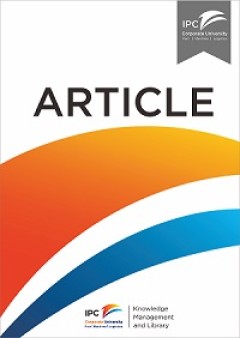
A dynamic theory of leadership development
The paper offers a dynamic theory of leadership development.
- Edisi
- Volume 30, Issue 6
- ISBN/ISSN
- -
- Deskripsi Fisik
- 26 p.
- Judul Seri
- Leadership & Organization Development Journal
- No. Panggil
- ATC LE CAR e
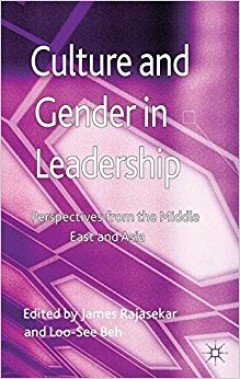
Culture and Gender in Leadership: Perspectives from the Middle East and Asia
The overall aim of this volume is to present the research studies carried out in the Middle East and Asia in the fields of culture and gender and their influence on leadership in particular. The cultures and practices of these geographical regions are very much varied and this book, Culture and Gender in Leadership: Perspectives from the Middle East and Asia, brings together analyses of these t…
- Edisi
- -
- ISBN/ISSN
- 1–137–31156–6
- Deskripsi Fisik
- xii, 317 p
- Judul Seri
- -
- No. Panggil
- TXT LE RAj c

Logistics Performance Measurement in The Supply Chain: A Benchmark
Purpose – The purpose of this paper is to describe the state of logistics performance measurement in corporations based in the USA. Design/methodology/approach – A triangulation approach is used, including, a Delphi study involving more than 100 practitioners, academics, and consultants identified as logistics experts; personal interviews conducted with 55 executives of 20 firms identif…
- Edisi
- Vol. 16 Iss 6 pp
- ISBN/ISSN
- 1463-5771
- Deskripsi Fisik
- 16 p
- Judul Seri
- Benchmarking: An International Journal
- No. Panggil
- ATC LO KEE l

A Framework For Purchasing Transport Services in Small And Medium Size Enterp…
Abstract Purpose – The purpose of this paper is to present a framework for purchasing transport services to enable small and medium size enterprises (SMEs) to improve relationships with logistics service providers (LSPs) and enhance their own competitive advantage and profitability. Many SMEs lack competence in purchasing transport services and a subsequent lack of “purchasing power” …
- Edisi
- Vol. 38 Iss 1 pp
- ISBN/ISSN
- 0960-0035
- Deskripsi Fisik
- 21 p
- Judul Seri
- International Journal of Physical Distribution & Logistics Management
- No. Panggil
- ATC LO HOL a

A Decision System to Aid Canadian Exports to Europe
- Edisi
- Vol. 4 Iss 1 pp
- ISBN/ISSN
- -
- Deskripsi Fisik
- 9 p
- Judul Seri
- The International Journal of Logistics Management
- No. Panggil
- ATC LO BAR a
- Edisi
- Vol. 4 Iss 1 pp
- ISBN/ISSN
- -
- Deskripsi Fisik
- 9 p
- Judul Seri
- The International Journal of Logistics Management
- No. Panggil
- ATC LO BAR a
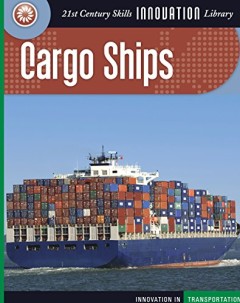
Twenty one century skills innovation library : cargo ship
- Edisi
- -
- ISBN/ISSN
- 978-1-60279-233-3
- Deskripsi Fisik
- 36 pages
- Judul Seri
- -
- No. Panggil
- TXT LO FLA t
- Edisi
- -
- ISBN/ISSN
- 978-1-60279-233-3
- Deskripsi Fisik
- 36 pages
- Judul Seri
- -
- No. Panggil
- TXT LO FLA t
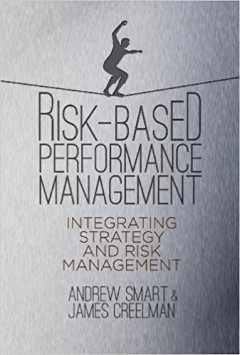
Risk-Based Performance Management: Integrating Strategy and Risk Management
Pulling together into a single framework the two separate disciplines of strategy management and risk management, this book provides a practical guide for organizations to shape and execute sustainable strategies with full understanding of how much risk they are willing to accept in pursuit of strategic goals.
- Edisi
- -
- ISBN/ISSN
- 978–0–230–30132–0
- Deskripsi Fisik
- xviii, 293 p
- Judul Seri
- -
- No. Panggil
- TXT MG SMA r

Developing a consensus definition of supply chain management: a qualitative s…
Without the adoption of a uniform agreed upon definition of supply chain management (SCM), researchers and practitionerswill not be able to “advance the theory and practice” of the discipline. An integrated definition of SCM would greatly benefit researchers’ efforts to study the phenomenon of SCM and those practitioners attempting to implement SCM. This paper aims to address these issues.
- Edisi
- Vol. 39 No. 8, 2009
- ISBN/ISSN
- -
- Deskripsi Fisik
- 26 p.
- Judul Seri
- International Journal of Physical Distribution & Logistics Management
- No. Panggil
- ATC LO BOY d

Managing Variety in Automotive Logistics With the Rule of Three
In this paper, the management of variety in automobile manufacturing is broadened from simply considering the choice of models, options and parts to include strategic issues in sourcing and logistics systems. Some of the major cost elements associated with varietal increase are identified, leading into a discussion of how logistics system redesign can reduce or, indeed, eliminate the unwanted i…
- Edisi
- Vol. 5 Issue: 2, pp.29-40
- ISBN/ISSN
- -
- Deskripsi Fisik
- 14 p.
- Judul Seri
- The International Journal of Logistics Management
- No. Panggil
- ATC LO COO m

The challenge of change: logistics in the new Europe
Europe today represents one of the world's fastest developing market‐places for both goods and services. Rapid changes in the business, political and regulatory environments are placing considerable stress on companies in Europe, whether national or international in their orientation. For many companies, these events are coincidental with the process of evolving into global businesses, which …
- Edisi
- Vol. 3 Issue: 2, pp.1-18
- ISBN/ISSN
- -
- Deskripsi Fisik
- 20 p.
- Judul Seri
- The International Journal of Logistics Management
- No. Panggil
- ATC LO KRE t

The paradox of logistics in Europe
The completion of the Single European Market in 1992 has major implications for logistics throughout the 1990s and beyond. However, as logistics has come under the spotlight, many managers and academics have come to realize that their understanding of the field is limited. In particular, both the differences in practice between countries and the future directions for innovation in logistics rem…
- Edisi
- Vol. 2 Issue: 2, pp.42-54
- ISBN/ISSN
- -
- Deskripsi Fisik
- 15 p.
- Judul Seri
- The International Journal of Logistics Management
- No. Panggil
- ATC LO COO t

Logistics: Perspectives for the 1990s
The decade of the 1980s has been witness to a long period of stable, sustained economic growth in the American economy, with moderate inflation, favourable interest rates, and steady growth in GNP. The decade has been remarkably free of the economic turmoil that marred the 1970s ‐ double digit inflation, double digit prime interest rates, the energy crisis. Nevertheless, the last nine years h…
- Edisi
- Vol. 1 Issue: 1, pp.1-6
- ISBN/ISSN
- -
- Deskripsi Fisik
- 8 p.
- Judul Seri
- The International Journal of Logistics Management
- No. Panggil
- ATC LO MAS l

Becoming a “world class” company with logistics service quality
A “world class” organization must provide high levels of logistics service quality to customers. Knowledge of customer expectations and an understanding of the firm's performance on logistics service attributes relative to competitors are vital to achieving service excellence. Research studies in four industries identify the most important logistics service attributes in business‐to‐bus…
- Edisi
- Vol. 3 Issue: 1, pp.73-81
- ISBN/ISSN
- -
- Deskripsi Fisik
- 12 p.
- Judul Seri
- The International Journal of Logistics Management
- No. Panggil
- ATC LO LAM b

Logistics performance in Europe: the challenge of 1992
The market for logistics services in Europe is undergoing unprecedented change. Not only is it being affected by world‐ scale developments, such as the globalization of manufacturing industry and the genesis of internationalisation in retailing, but there are major impacts within Europe itself. Numbered amongst these are; the effects of 1992 and the Single European Market on logistics users (…
- Edisi
- Vol. 1 Issue: 1, pp.28-35
- ISBN/ISSN
- -
- Deskripsi Fisik
- 10 p.
- Judul Seri
- The International Journal of Logistics Management
- No. Panggil
- ATC LO PET l

A supply chain diagnostic tool
How can a third-party logistics (3PL) provider decide whether or not there is a viable opportunity to serve the needs and desires of potential clients? To answer this question, a tool is needed that can help determine if there are problems, inefficiencies, or needed improvements in a client’s, or a potential client’s, supply chain that the 3PL can effectively address. Most diagnostic tools …
- Edisi
- Vol. 34 Iss 10 pp. 827 - 855
- ISBN/ISSN
- 0960-0035
- Deskripsi Fisik
- 31 p.
- Judul Seri
- International Journal of Physical Distribution & Logistics Management
- No. Panggil
- ATC LO FOG a

Building the extended enterprise: key collaboration factors
The purpose of this paper is to explore supply chain collaboration issues in the extended enterprise (EE) to develop a more complete understanding of the nature and effectiveness of collaboration in the transition towards, but also within, the EE paradigm.
- Edisi
- Vol. 22 No. 3, 2011
- ISBN/ISSN
- -
- Deskripsi Fisik
- 26 p.
- Judul Seri
- The International Journal of Logistics Management
- No. Panggil
- ATC LO BRA b

A project management prospective in achieving a sustainable supply chain for …
The purpose of this paper is to explore the alternative procurement procedures that will address the complexity of issues surrounding timber procurement for housing reconstruction after the Tsunami in Banda Aceh. It reviews construction supply chain management (SCM) and procurement philosophies with a project management (PM) perspective to facilitate the logistics of post-disaster reconstruction.
- Edisi
- Vol. 2 No. 3, 2009 pp. 386-400
- ISBN/ISSN
- 1753-8378
- Deskripsi Fisik
- 17 p.
- Judul Seri
- International Journal of Managing Projects in Business
- No. Panggil
- ATC LO ZUO a

Applying Theories From Other Disciplines To Logistics
- Edisi
- Vol. 27 Iss 9/10 pp
- ISBN/ISSN
- 0960-0035
- Deskripsi Fisik
- 30 p
- Judul Seri
- International Journal of Physical Distribution & Logistics Management
- No. Panggil
- ATC LO STO a
- Edisi
- Vol. 27 Iss 9/10 pp
- ISBN/ISSN
- 0960-0035
- Deskripsi Fisik
- 30 p
- Judul Seri
- International Journal of Physical Distribution & Logistics Management
- No. Panggil
- ATC LO STO a

Chapter 10 port governance and privatization in the united states : public ow…
Owing to its history as a nation fashioned from a federation of relatively autonomous states, port governance in the United States is largely in the hands of those 50 states rather than the federal government. Evolving from accustomed private ownership in the 18th and 19th centuries, seaports in the US are now commonly owned by public agencies, governed by public boards and yet often operated b…
- Edisi
- Volume 17, 207–235
- ISBN/ISSN
- 0739-8859
- Deskripsi Fisik
- 29 p.
- Judul Seri
- -
- No. Panggil
- ATC PO FAW c

Assesing international port operations
- Edisi
- -
- ISBN/ISSN
- -
- Deskripsi Fisik
- 10 p.
- Judul Seri
- -
- No. Panggil
- ATC PO MUR a
- Edisi
- -
- ISBN/ISSN
- -
- Deskripsi Fisik
- 10 p.
- Judul Seri
- -
- No. Panggil
- ATC PO MUR a

A meta-analysis of DEA and SFA studies of the technical efficiency of seapor…
This paper presents a meta-analysis of variations in seaports’ Mean Technical Efficiency (MTE) scores based on 40 studies published in refereed academic journals. We link the variation in estimated MTE scores to differences in the following factors: the frontier methodology used, which essentially are the Data Envelopment Analysis (DEA) and the Stochastic Frontier Analysis (SFA); regions whe…
- Edisi
- -
- ISBN/ISSN
- -
- Deskripsi Fisik
- 12 p.
- Judul Seri
- Transportation Research Part A
- No. Panggil
- ATC PO ODE a

Marketing myopia revisited: lessons for logistics
Refers to the historic article by Theodore Levitt, entitled “Marketing myopia”, that appeared in 1960 in the Harvard Business Review which has had significant impact on business thought and practice. The philosophy or orientation presented by Levitt still has profound implications for the discipline of logistics, even 40 years after the writing of his article. This article argues that perso…
- Edisi
- Vol. 32 Issue: 1, pp.12-21
- ISBN/ISSN
- -
- Deskripsi Fisik
- 13 p.
- Judul Seri
- International Journal of Physical Distribution & Logistics Management
- No. Panggil
- ATC LO STO m

Comparison of Asian and European Logistics Systems
- Edisi
- Vol. 33 Iss 1 pp
- ISBN/ISSN
- 0960-0035
- Deskripsi Fisik
- 26 p
- Judul Seri
- International Journal of Physical Distribution & Logistics Management
- No. Panggil
- ATC LO BOO c
- Edisi
- Vol. 33 Iss 1 pp
- ISBN/ISSN
- 0960-0035
- Deskripsi Fisik
- 26 p
- Judul Seri
- International Journal of Physical Distribution & Logistics Management
- No. Panggil
- ATC LO BOO c

Port investment strategies under uncertainty: the case of a southeast asian m…
Port investment decisions are mainly related to productivity improvement strategies or capacity expansion leading to higher capacity utilization and financial performance. The authors propose an investment decision-making process for future port infrastructure investments taking into account various uncertainties, which can impact the return of the investment over the project’s useful life. …
- Edisi
- vol 30
- ISBN/ISSN
- -
- Deskripsi Fisik
- 21 pages
- Judul Seri
- -
- No. Panggil
- ATC PO LAG p

Controlling Customer Logistics Service
- Edisi
- Vol. 24 No. 4, 1994,
- ISBN/ISSN
- -
- Deskripsi Fisik
- 9 p
- Judul Seri
- International Journal of Physical Distribution & Logistics Management
- No. Panggil
- ATC MR HES c
- Edisi
- Vol. 24 No. 4, 1994,
- ISBN/ISSN
- -
- Deskripsi Fisik
- 9 p
- Judul Seri
- International Journal of Physical Distribution & Logistics Management
- No. Panggil
- ATC MR HES c

Controlling customer logistics service
Customer logistics service may mean different things to various organizations! Heavy emphasis in one organization may be placed on having a product available at the time, at the place, and in the quantities desired. In another company, it may be desirable to preserve the relative freedom in the manner and timing with which orders can be received from customers for processing. At other times and…
- Edisi
- Vol. 24 No. 4, 1994, pp. 4-10
- ISBN/ISSN
- -
- Deskripsi Fisik
- 9 p.
- Judul Seri
- International Journal of Physical Distribution & Logistics Management
- No. Panggil
- ATC LO HES c

Using the elaboration likelihood model to guide customer service-based segmen…
Conceptualizes a model of customer service‐based segmentation derived from the elaboration likelihood model (ELM). Logistics organizations are utilizing improved customer service to achieve competitive advantage. However, these firms must segment customers to avoid escalating their service platform to those unlikely to provide adequate return. Based on ELM‐established relationships, propo…
- Edisi
- Vol. 27 Issue: 9/10, pp.600-615
- ISBN/ISSN
- -
- Deskripsi Fisik
- 18 p.
- Judul Seri
- International Journal of Physical Distribution & Logistics Management
- No. Panggil
- ATC LO ECK u

Teaching supply chain and logistics management through commercial software
The purpose of this paper is to describe the development and teaching of graduate courses providing in-depth experiential learning employing commercial supply chain management software. The benefits of teaching such courses are described, the challenges in offering such courses are identified, and some solutions to overcome the challenges are offered
- Edisi
- Vol. 21 No. 2, 2010 pp. 293-308
- ISBN/ISSN
- -
- Deskripsi Fisik
- 18 p.
- Judul Seri
- The International Journal of Logistics Management
- No. Panggil
- ATC LO SWE t

Measuring the longitudinal performance of 3PL branch operations
The purpose of this paper is to analyze the longitudinal efficiency of branch operations of a third party logistics (3PL) company for comparative performance measurement and internal benchmarking.
- Edisi
- Vol. 20 No. 2, 2013 pp. 251-262
- ISBN/ISSN
- -
- Deskripsi Fisik
- 14 p.
- Judul Seri
- Benchmarking: An International Journal
- No. Panggil
- ATC LO HAN m

Recurrent decision approaches to shipment-release timing in freight consolida…
Discusses “recurrent approaches” to determining when to despatch a consolidated load. Unlike a “non‐recurrent approach” (which sets a target time or weight prior to accumulating orders and despatches when the target is reached), recurrent approaches re‐evaluate the shipment‐release decision several times within an order accumulation cycle. Presents two probabilistic recurrent mode…
- Edisi
- Vol. 25 Issue: 5, pp.3-23
- ISBN/ISSN
- -
- Deskripsi Fisik
- 23 p.
- Judul Seri
- Vol. 25 No. 5, 1995, pp. 3-23.
- No. Panggil
- ATC LO HIG r

Profiling international freight forwarders: an update
Provides results from a recent empirical study of US‐based international freight forwarders (IFFs). Compares IFF demographics with those from previous empirical research and finds that the IFF industry is still dominated by small companies and that IFFs continue to diversify their revenue bases. Presents information concerning contemporary issues affecting the forwarding industry and finds …
- Edisi
- Vol. 31 Issue: 3, pp.152-168
- ISBN/ISSN
- -
- Deskripsi Fisik
- 20 p.
- Judul Seri
- International Journal of Physical Distribution & Logistics Management
- No. Panggil
- ATC LO MUR p

Market-oriented sustainability: moderating impact of stakeholder involvement
The theoretical framework for market-oriented sustainability developed by Crittenden, Crittenden, Ferrell, Ferrell, and Pinney, in which the relationship between organizational culture and performance management is theorized as moderated by stakeholder involvement, is empirically assessed. The paper aims to discuss these issues.
- Edisi
- Vol. 114 No. 1, 2014 pp. 21-36
- ISBN/ISSN
- -
- Deskripsi Fisik
- 18 p.
- Judul Seri
- Industrial Management & Data Systems
- No. Panggil
- ATC LO CLA m

Flexibility and responsiveness in relation to the use of MRPII
Seeks to document a responsive strategy to manufacturing planning with Cussons (UK) Limited, a company operating in the fast moving consumer goods (FMCG) industry. In the FMCG environment products are manufactured to a sales forecast, and customers demand 100 per cent service levels within lead‐times, sometimes in the order of hours rather than days. It is essential that a company′s stock…
- Edisi
- Vol. 8 Issue: 6, pp.13-19
- ISBN/ISSN
- -
- Deskripsi Fisik
- 8 p.
- Judul Seri
- Logistics Information Management
- No. Panggil
- ATC LO ALD f
 Karya Umum
Karya Umum  Filsafat
Filsafat  Agama
Agama  Ilmu-ilmu Sosial
Ilmu-ilmu Sosial  Bahasa
Bahasa  Ilmu-ilmu Murni
Ilmu-ilmu Murni  Ilmu-ilmu Terapan
Ilmu-ilmu Terapan  Kesenian, Hiburan, dan Olahraga
Kesenian, Hiburan, dan Olahraga  Kesusastraan
Kesusastraan  Geografi dan Sejarah
Geografi dan Sejarah